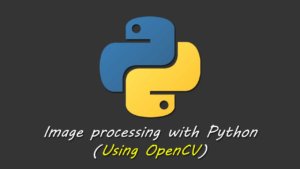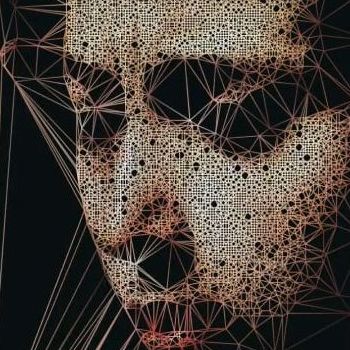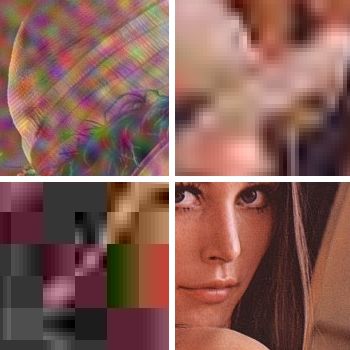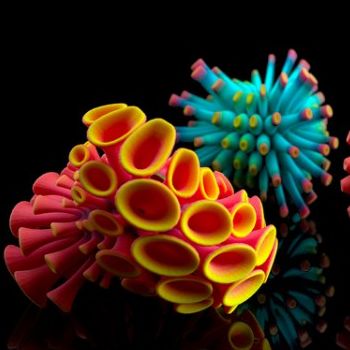
For Outstation Students, we are having online project classes both technical and coding using net-meeting software
For details, Call: 9886692401/9845166723
DHS Informatics provides academic projects based on IEEE Python Image Processing Projects with best and latest IEEE papers implementation. Below mentioned are the 2019-2020 best IEEE Python Image Processing Projects for CSE, ECE, EEE and Mechanical engineering students. To download the abstracts of Python domain project click here.
For further details call our head office at +91 98866 92401 / 98451 66723, we can send synopsis and IEEE papers based on students interest. For more details please visit our head office and get registered.IEEE Python Image Processing Projects
We believe in quality service with commitment to get our students full satisfaction.IEEE Python Image Processing Projects
We are in this service for more than 15 years and all our customers are delighted with our service.IEEE Python Image Processing Projects
Abstract: A real-world animal biometric system that detects and describes animal life in image and video data is an emerging subject in machine vision. These systems develop computer vision approaches for the classification of animals. A novel method for animal face classification based on one of the popular convolutional neural network (CNN) features. We are using CNN which can automatically extract features, learn and classify them. The proposed method may also be used in other areas of image classification and object recognition. The experimental results show that automatic feature extraction in CNN is better than other simple feature extraction techniques (both local- and appearance-based features. The authors showed that the proposed technique have a positive effect on classification accuracy.


Contact:
![]() +91-98451 66723
+91-98451 66723
![]() +91-98866 92401
+91-98866 92401
Abstract: The leaves of a plant provides the most important information or data which provides us to know which type of plant it is and which type of disease is infected on that leaf. The plants play an important role in the biological field. In this project we have describe the development of an Android application that gives users or farmers the capability to identify the plant leaf diseases based on the photographs of plant leaves taken from an android application. Detecting diseases on leaf of plant at early stages gives strength to overcome it and treat it appropriately by providing the details to the farmer that which prevention action should be taken.
Contact:
![]() +91-98451 66723
+91-98451 66723
![]() +91-98866 92401
+91-98866 92401
Abstract: In medical diagnostic application, early defect detection is a crucial task as it provides critical insight into diagnosis. Medical imaging technique is actively developing field inengineering. Magnetic Resonance imaging (MRI) is one those reliable imaging techniques on which medical diagnostic is based upon. Manual inspection of those images is a tedious job as the amount of data and minute details are hard to recognize by the human. For this automating those techniques are very crucial. In this paper, we are proposing a method which can be utilized to make tumor detection easier. The MRI deals with the complicated problem of brain tumor detection. Due to its complexity and variance getting better accuracy is a challenge. Using Adaboost machine learning algorithm we can improve over accuracy issue. The proposed system consists of three parts such as Preprocessing, Feature extraction and Classification. Preprocessing has removed noise in the raw data, for feature extraction we used GLCM (Gray Level Co- occurrence Matrix) and for classification boosting technique used (Adaboost).
Contact:
![]() +91-98451 66723
+91-98451 66723
![]() +91-98866 92401
+91-98866 92401
Abstract: Deep learning has brought a series of breakthroughs in image processing. Specifically, there are significant improvements in the application of food image classification using deep learning techniques. However, very little work has been studied for the classification of food ingredients. Therefore, this paper proposes a new framework, called DeepFood which not only extracts rich and effective features from a dataset of food ingredient images using deep learning but also improves the average accuracy of multi-class classification by applying advanced machine learning techniques. First, a set of transfer learning algorithms based on Convolutional Neural Networks (CNNs) are leveraged for deep feature extraction. Then, a multi-class classification algorithm is exploited based on the performance of the classifiers on each deep feature set. The DeepFood framework is evaluated on a multi-class dataset that includes 41 classes of food ingredients and 100 images for each class. Experimental results illustrate the effectiveness of the DeepFood framework for multi-class classification of food ingredients. This model that integrates ResNet deep feature sets, Information Gain (IG) feature selection, and the SMO classifier has shown its supremacy for food-ingredients recognition compared to several existing work in this area.
Contact:
![]() +91-98451 66723
+91-98451 66723
![]() +91-98866 92401
+91-98866 92401
Abstract: We consider the use of deep Convolutional Neural Networks (CNN) with transfer learning for the image classification and detection problems posed within the context of X-ray baggage security imagery. The use of the CNN approach requires large amounts of data to facilitate a complex end-to-end feature extraction and classification process. Within the context of Xray security screening, limited availability of object of interest data examples can thus pose a problem. To overcome this issue, we employ a transfer learning paradigm such that a pre-trained CNN, primarily trained for generalized image classification tasks where sufficient training data exists, can be optimized explicitly as a later secondary process towards this application domain. To provide a consistent feature-space comparison between this approach and traditional feature space representations, we also train Support Vector Machine (SVM) classifier on CNN features.We empirically show that fine-tuned CNN features yield superior performance to conventional hand-crafted features on object classification tasks within this context. Overall we achieve 0.994 accuracy based on AlexNet features trained with Support Vector Machine (SVM) classifier. In addition to classification, we also explore the applicability of multiple CNN driven detection paradigms such as sliding window based CNN (SW-CNN), Faster RCNN (F-RCNN), Region-based Fully Convolutional Networks (R-FCN) and YOLOv2. We train numerous networks tackling both single and multiple detections over SW-CNN/F-RCNN/RFCN/ YOLOv2 variants. YOLOv2, Faster-RCNN, and R-FCN provide superior results to the more traditional SW-CNN approaches. With the use of YOLOv2, using input images of size 544_544, we achieve 0.885 mean average precision (mAP) for a six-class object detection problem. The same approach with an input of size 416_416 yields 0.974 mAP for the two-class firearm detection problem and requires approximately 100ms per image. Overall we illustrate the comparative performance of these techniques and show that object localization strategies cope well with cluttered X-ray security imagery where classification techniques fail.
Contact:
![]() +91-98451 66723
+91-98451 66723
![]() +91-98866 92401
+91-98866 92401
Abstract: facial expression analysis and recognition have been researched since the 17’th century. The foundational studies on facial expressions, which have formed the basis of today’s research, can be traced back to few centuries ago. Precisely, a detailed note on the various expressions and movements of head muscles was given in 1649 by John Bulwer(1). Another important milestone in the study of facial expressions and human emotions, is the work done by the psychologist Paul Ekman(2) and his colleagues. This important work have been done in the 1970s and has a significant importance and large influence on the development of modern day automatic facial expression recognizers. This work lead to adapting and developing the comprehensive Facial Action Coding System(FACS), which has since then become the de-facto standard for facial expression recognition. Over the last decades, automatic facial expressions analysis has become an active research area that finds potential applications in fields such as Human-Computer Interfaces (HCI), Image Retrieval, Security and Human Emotion Analysis. Facial
expressions are extremely important in any human interaction, and additional to emotions, it also reflects on other mental activities, social interaction and physiological signals. In this paper, we proposes an Artificial Neural Network (ANN) of two hidden layers, based on multiple Radial Bases Functions
Networks (RBFN’s) to recognize facial expressions. The ANN, is trained on features extracted from images by applying a multiscale and multi-orientation Gabor filters. We have considered the cases of subject independent/dependent facial expression recognition using The JAFFE and the CK+ benchmarks to evaluate the proposed model.
Contact:
![]() +91-98451 66723
+91-98451 66723
![]() +91-98866 92401
+91-98866 92401
Abstract: In 1899, Galton first captured ink-on-paper fingerprints of a single child from birth until the age of 4.5 years, manually compared the prints, and concluded that “the print of a child at the age of 2.5 years would serve to identify hi ever after”. Since then, ink-on-paper fingerprinting and manual comparison methods have been superseded by digital capture and automatic fingerprint comparison techniques, but only a few feasibility studies on child fingerprint recognition have been conducted. Here, we present the first systematic and rigorous longitudinal study that addresses the following questions: (i) Do fingerprints of young children possess the salient features required to uniquely recognize a child? (ii) If so, at what age can a child’s fingerprints be captured with sufficient fidelity for recognition? (iii) Can a child’s fingerprints be used to reliably recognize the child as he ages? For our study, we collected fingerprints of 309 children (0-5 years old) four different times over a one year period. We show, for the first time, that fingerprints acquired from a child as young as 6 hours old exhibit distinguishing features necessary for recognition, and that state-of-the-art fingerprint technology achieves high recognition accuracy (98.9% true accept rate at 0.1% false accept rate) for children older than 6 months. Additionally, we use mixed-effects statistical models to study the persistence of child fingerprint recognition accuracy and show that the recognition accuracy is not significantly affected over the one year time lapse in our data. Given rapidly growing requirements to recognize children for vaccination tracking, delivery of supplementary food, and national identification documents, our study demonstrates that fingerprint recognition of young children (6 months and older) is a viable solution based on available capture and recognition technology.
Contact:
![]() +91-98451 66723
+91-98451 66723
![]() +91-98866 92401
+91-98866 92401
Abstract: Malaria is a very serious infectious disease caused by a peripheral blood parasite of the genus Plasmodium. Conventional microscopy, which is currently “the gold standard” for malaria diagnosis has occasionally proved inefficient since it is time consuming and results are difficult to reproduce. As it poses a serious global health problem, automation of the evaluation process is of high importance. In this work, an accurate, rapid and affordable model of malaria diagnosis using stained thin blood smear images was developed. The method made use of the intensity features of Plasmodium parasites and erythrocytes.Images of infected and non-infected erythrocytes were acquired, pre-processed, relevant features extracted from them and eventually diagnosis was made based on the features extracted from the images. A set of features based on intensity have been proposed, and the performance of these features on the red blood cell samples from the created database have been evaluated using an artificial neural network (ANN) classifier. The results have shown that these features could be successfully used for malaria detection.
Contact:
![]() +91-98451 66723
+91-98451 66723
![]() +91-98866 92401
+91-98866 92401
Abstract: This paper proposes a skin disease detection method based on image processing techniques. This method is mobile based and hence very accessible even in remote areas and it is completely noninvasive to patient’s skin. The patient provides an image of the infected area of the skin as an input to the prototype. Image processing techniques are performed on this image and the detected disease is displayed at the output. The proposed system is highly beneficial in rural areas where access to dermatologists is limited.
Contact:
![]() +91-98451 66723
+91-98451 66723
![]() +91-98866 92401
+91-98866 92401
Abstract: Video OCR is a technique that can greatly help to locate the topics of interest in video via the automatic extraction and reading of captions and annotations. Text in video can provide key indexing information. Recognizing such text for search application is critical. Major difficult problem for character recognition for videos is degraded and deformated characters, low resolution characters or very complex background. To tackle the problem preprocessing on text image plays vital role. Most of the OCR engines are working on the binary image so to find a better binarization procedure for image to get a desired result is important. Accurate binarization process minimizes the error rate of video OCR.
Contact:
![]() +91-98451 66723
+91-98451 66723
![]() +91-98866 92401
+91-98866 92401
Abstract: Determining the material category of a surface from an image is a demanding task in perception that is drawing increasing attention. Following the recent remarkable results achieved for image classification and object detection utilizing Convolutional Neural Networks (CNNs), we empirically study material classification of everyday objects employing these techniques. More specifically, we conduct a rigorous evaluation of how state-of-the art CNN architectures compare on a common ground over widely used material databases. Experimental results on three challenging material databases show that the best performing CNN architectures can achieve mean average precision when classifying materials.
Contact:
![]() +91-98451 66723
+91-98451 66723
![]() +91-98866 92401
+91-98866 92401
Abstract : The high-resolution devices for image capturing and the high professional requirement for users, are very complex to extract features of the fruit fly image for classification. Therefore, a bi-linear CNN model based on the mid-level and high-level feature fusion (FB-CNN) is proposed for classifying the fruit fly image. At the first step, the images of fruit fly are blurred by the Gaussian algorithm, and then the features of the fruit fly images are extracted automatically by using CNN. Afterward, the mid- and high-level features are selected to represent the local and global features, respectively. Then, they are jointly represented. When finished, the FB-CNN model was constructed to complete the task of image classification of the fruit fly. Finally, experiments data show that the FB-CNN model can effectively classify four kinds of fruit fly images. The accuracy, precision, recall, and F1 score in testing dataset are 95.00%, respectively.
Abstract : Gender prediction accuracy increases as CNN architecture evolves. This paper proposes voting schemes to utilize the already developed CNN models to further improve gender prediction accuracy. Majority voting usually requires odd numbered models while proposed softmax based voting can utilize any number of models to improve accuracy. With experiments, it is shown that the voting of CNN models leads to further improvement of gender prediction accuracy and that softmax-based voters always show better gender prediction accuracy than majority voters though they consist of the same CNN models.
Abstract : In real-world applications such as emotion recognition from recorded brain activity, data are captured from electrodes over time. These signals constitute a multidimensional time series. In this paper, Echo State Network (ESN), a recurrent neural network with a great success in time series prediction and classification, is optimized with different neural plasticity rules for classification of emotions based on electroencephalogram (EEG) time series. Actually, the neural plasticity rules are a kind of unsupervised learning adapted for the reservoir, i.e. the hidden layer of ESN. More specifically, an investigation of Oja’s rule, BCM rule and gaussian intrinsic plasticity rule was carried out in the context of EEG-based emotion recognition. The study, also, includes a comparison of the offline and online training of the ESN. When testing on the well-known affective benchmark ”DEAP dataset” which contains EEG signals from 32 subjects, we find that pretraining ESN with gaussian intrinsic plasticity enhanced the classification accuracy and outperformed the results achieved with an ESN pretrained with synaptic plasticity. Four classification problems were conducted in which the system complexity is increased and the discrimination is more challenging, i.e. inter-subject emotion discrimination. Our proposed method achieves higher performance over the state of the art methods.
Abstract : Reversible data hiding (RDH) in color image is an important topic of data hiding. This paper presents an efficient RDH algorithm for color image via double-layer embedding. The key contribution is the proposed double-layer embedding technique based on histogram shifting (HS). This technique exploits image interpolation to generate prediction error matrices for HS in the first-layer embedding and uses local pixel similarity to calculate difference matrices for HS in the second-layer embedding. It inherits reversibility from HS and makes high embedding capacity due to the use of double layers in data embedding. In addition, interchannel correlation is incorporated into the first-layer embedding and the second-layer embedding for generating histograms with high peaks, so as to improve embedding capacity. Experiments with open standard datasets are done to validate performance of the proposed RDH algorithm. Comparison results show that the proposed RDH algorithm outperforms some state-of-the-art RDH algorithms in terms of embedding capacity and visual quality.
IEEE Python Image Processing Projects
IEEE Python Image Processing Projects
 Image processing is a method to convert an image into digital form and perform some operations on it, in order to get an enhanced image or to extract some useful information from it. It is a type of signal dispensation in which input is image, like video frame or photograph and output may be image or characteristics associated with that image. Usually Image Processing system includes treating images as two dimensional signals while applying already set signal processing methods to them. IEEE Python Image Processing Projects Click here.
Image processing is a method to convert an image into digital form and perform some operations on it, in order to get an enhanced image or to extract some useful information from it. It is a type of signal dispensation in which input is image, like video frame or photograph and output may be image or characteristics associated with that image. Usually Image Processing system includes treating images as two dimensional signals while applying already set signal processing methods to them. IEEE Python Image Processing Projects Click here.





